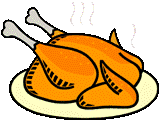Food Science and Technology Department
ORCID IDs
http://orcid.org/0000-0002-8568-7096
Date of this Version
2020
Citation
Stanton et al. BMC Genomics (2020) 21:562 https://doi.org/10.1186/s12864-020-06943-x
Abstract
Background: Enterohemorrhagic Escherichia coli O157:H7 (EHEC) is a significant foodborne pathogen that resides asymptomatically within cattle and other ruminants. The EHEC genome harbors an extensive collection of mobile genetic elements (MGE), including multiple prophage, prophage-like elements, plasmids, and insertion sequence (IS) elements.
Results: A chronological collection of EHEC strains (FRIK804, FRIK1275, and FRIK1625) isolated from a Wisconsin dairy farm (farm X) comprised a closely related clade genetically differentiated by structural alterations to the chromosome. Comparison of the FRIK804 genome with a reference EHEC strain Sakai found a unique prophage like element (PLE, indel 1) and an inversion (1.15 Mb) situated symmetrically with respect to the terminus region. Detailed analysis determined the inversion was due to homologous recombination between repeat sequences in prophage. The three farm X strains were distinguished by the presence or absence of indel 3 (61 kbp) and indel 4 (48 kbp); FRIK804 contained both of these regions, FRIK1275 lacked indel 4, and indels 3 and 4 were both absent in FRIK1625. Indel 3 was the stx2 prophage and indel 4 involved a deletion between two adjacent prophage with shared repeat sequences. Both FRIK804 and FRIK1275 produced functional phage while FRIK1625 did not, which is consistent with indel 3. Due to their involvement in recombination events, direct and inverted repeat sequences were identified, and their locations mapped to the chromosome. FRIK804 had a greater number and overall length of repeat sequences than E. coli K12 strain MG1655. Repeat sequences were most commonly associated with MGE.
Conclusions: This research demonstrated that three EHEC strains from a Wisconsin dairy farm were closely related and distinguished by variability within prophage regions and other MGE. Chromosome alterations were associated with recombination events between repeat sequences. An inventory of direct and inverted repeat sequences found a greater abundance and total length of repeat sequences in the EHEC strains compared to E. coli strain MG1655. The locations of the repeat sequences were biased towards MGE. The findings from this study expand our understanding of the precise molecular events and elements that contributed to genetic diversification of wild-type EHEC in the bovine and farm environments.


Comments
The Author(s). 2020